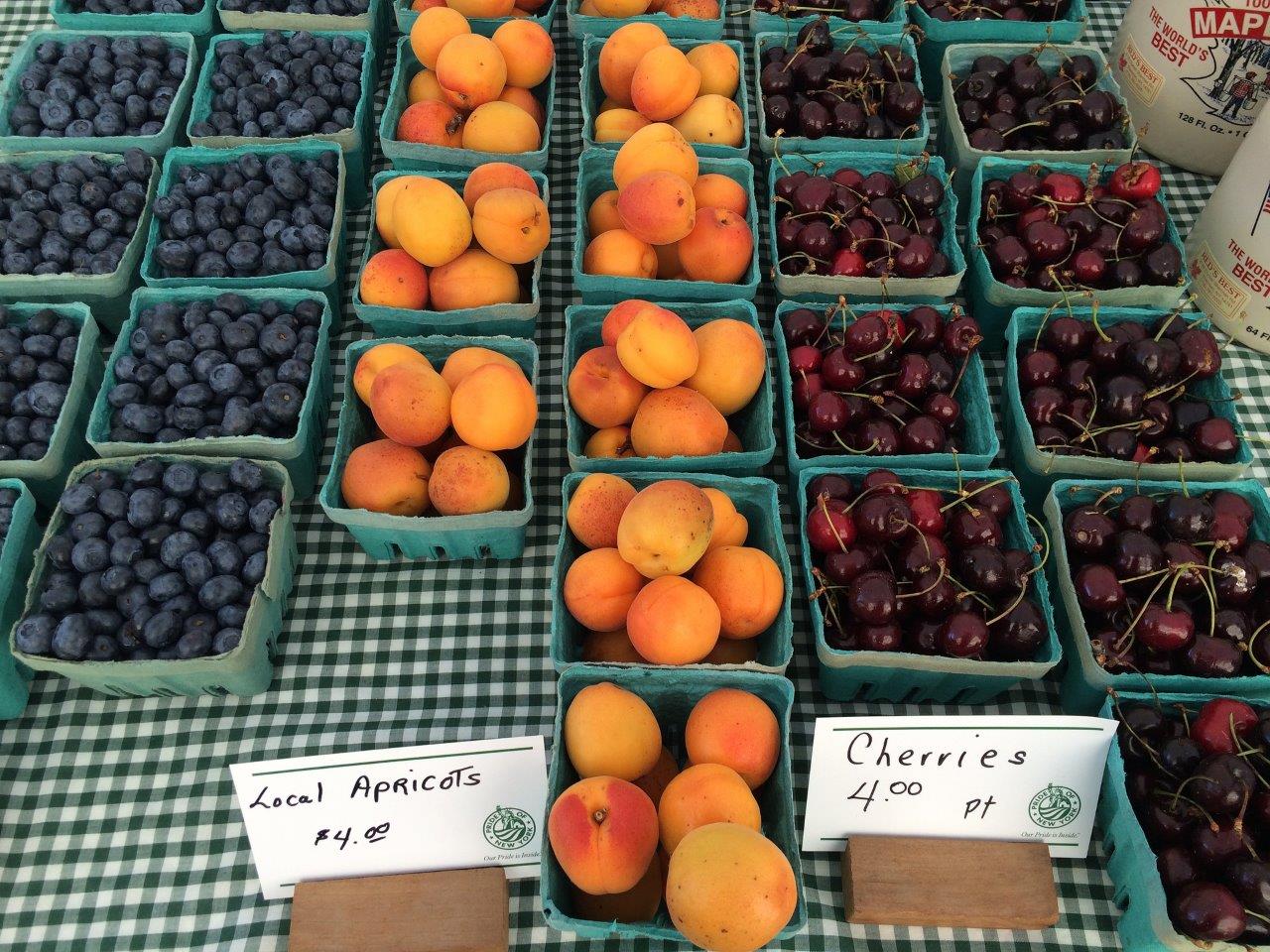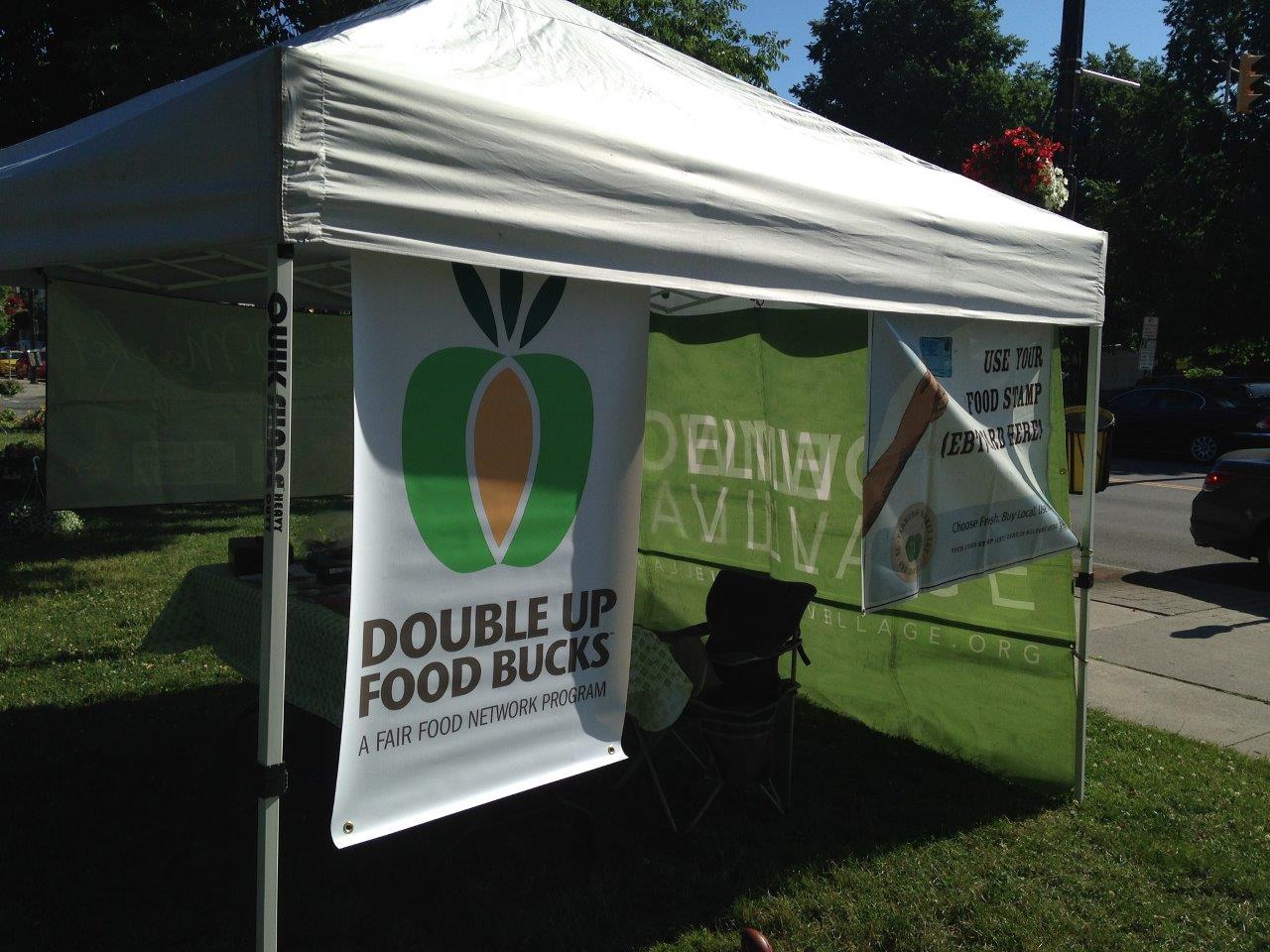How to Start a SNAP Incentive Program: Lessons From The Field
With its five-year track record, Double Up Food Bucks is inspiring folks from Alabama to Oklahoma to bring healthy food incentives to their communities. Momentum should only increase as federal funding comes online through the Food Insecurity Nutrition Incentive, a new federal grants program included in the 2014 Farm Bill.

As more communities consider launching SNAP incentive programs of their own, what lessons can we learn from the experience of others? To dig in, we decided to talk with Lisa Tucker, the director of Field & Fork Network in Western New York, who successfully launched Double Up Food Bucks this season in seven farmers markets in three counties across Western New York.
We first met Lisa at the Western New York Connections Conference back in February 2013. Field & Ford Network is a powerhouse of an organization working to connect consumers, producers, and food buyers to increase access to fresh, healthy food while creating a practical economic engine for local, sustainable agriculture. Its goal? A thriving regional food system across the eight county region that makes up Western New York. A partnership quickly blossomed as we worked with Field & Fork Network to adapt the Double Up model for their community.
Here are Lisa’s top five tips for starting a healthy food incentive program in your community.
1. Ask whether it’s needed.
Before launching a new program, see whether other SNAP or healthy food incentive programming already exists in your community. Is there a need for Double Up Food Bucks? If other programs or incentives exist, is there a way multiple incentives can work together?
Before launching a new program, see whether other SNAP or healthy food incentive programming already exists in your community. Is there a need for Double Up Food Bucks? If other programs or incentives exist, is there a way multiple incentives can work together?
2. Connect with your farmers markets.
Start conversations with market managers early to determine who is interested and can best manage and successfully deliver a SNAP incentive program in your community. It’s important to consider administrative capacity to implement the program. Strong relationships with market management are essential to an effective and successful program.
Start conversations with market managers early to determine who is interested and can best manage and successfully deliver a SNAP incentive program in your community. It’s important to consider administrative capacity to implement the program. Strong relationships with market management are essential to an effective and successful program.

North Tonowanda Farmers Market
3. Partnerships, partnerships, partnerships.
Relationships with key community partners are vitally important. These are the folks who can assist with on-the-ground outreach, education, and overall program awareness. Some groups to reach out to include food banks, SNAP nutrition educators, Department of Health, Department of Social Services, Farmers Market Associations, and any agencies that serve low-income populations.
Relationships with key community partners are vitally important. These are the folks who can assist with on-the-ground outreach, education, and overall program awareness. Some groups to reach out to include food banks, SNAP nutrition educators, Department of Health, Department of Social Services, Farmers Market Associations, and any agencies that serve low-income populations.
4. Cultivate strong relationships with funders.
I cannot stress enough how important it is to establish relationships and have ongoing communication with funders. It is important to provide funders with enough information so they understand both the program and its impact. One of the great things about Double Up Food Bucks is how much of the reporting and evaluation is embedded in the program operations. Funders appreciate that this level of detailed information is captured throughout and reported back. Which leads me to my last tip….
I cannot stress enough how important it is to establish relationships and have ongoing communication with funders. It is important to provide funders with enough information so they understand both the program and its impact. One of the great things about Double Up Food Bucks is how much of the reporting and evaluation is embedded in the program operations. Funders appreciate that this level of detailed information is captured throughout and reported back. Which leads me to my last tip….

5. Leverage the proven success of Double Up Food Bucks in Michigan!
Double Up Food Bucks is not a small demonstration project. It has a geographic footprint across the ninth biggest state in the country and a successful five-year track record benefiting families, farmers, and local economies. Being able to communicate to farmers market manager, community partners, and funders that this program is a proven success with outstanding numbers to back it up makes a big difference! The thorough third-party evaluations that Fair Food Network carries out provide invaluable information in building the support of local stakeholders.
Double Up Food Bucks is not a small demonstration project. It has a geographic footprint across the ninth biggest state in the country and a successful five-year track record benefiting families, farmers, and local economies. Being able to communicate to farmers market manager, community partners, and funders that this program is a proven success with outstanding numbers to back it up makes a big difference! The thorough third-party evaluations that Fair Food Network carries out provide invaluable information in building the support of local stakeholders.
Interested in bringing Double Up Food Bucks to your community? We have translated the Double Up program and tools into a toolkit available to others who want to replicate this model in their communities. We can help you assess the feasibility of starting a program, share tools to help get it off the ground, and more. For more info, email us at info@doubleupfoodbucks.org







